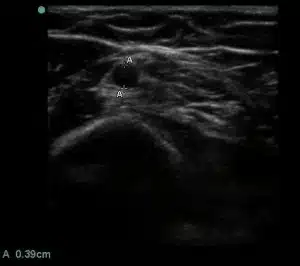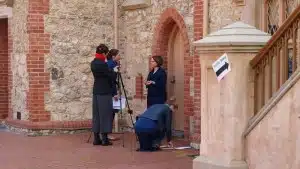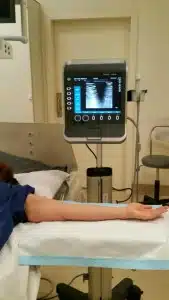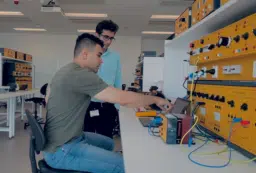The leading cause of death in patients receiving chemotherapy for cancer is not cancer: it’s blood clots.
Rebecca Sharp from University of South Australia has devised a new approach to reduce the development of clots and save patients’ lives.
“Clots form around the tubes that deliver drugs into patients’ veins, and can then break off to block blood supply to the lungs or cause other dangers to the patient’s health,” Rebecca explains.
“My studies show that the simple act of finding a vein of appropriate size before inserting the delivery device can make a difference.”
Rebecca used ultrasound to study vein size in patients receiving hospital treatment for cancer. She found that to reduce the risk of clotting, the intravenous delivery device should occupy less than 45% of the selected vein width.
“Taking up more of the vein increases the risk of a blood clot by more than 10 times,” she says.
Her results also show that there is considerable variation in vein size across patients, despite medical textbooks suggesting otherwise.
“The particular vein that is typically thought of as being the biggest is only so in about half the people receiving treatment,” says Rebecca.
“All patients should be assessed to find the right vein before chemotherapy commences.”
Rebecca’s findings have already made their way into the broader hospital setting, and are now part of the training provided to both nurses and doctors in main teaching hospitals in Adelaide. Assessing vein size only takes about 6 minutes for most patients.
Rebecca presented her research at Fresh Science South Australia 2015.
Fresh Science is a national program that helps early-career researchers find and share their stories of discovery. Over 30 early-career researchers nominated for Fresh Science SA, which was held at the South Australian Museum (training) and The Lion Hotel (public challenge event).
Fresh Science South Australia was supported by the The University of South Australia, The University of Adelaide, Flinders University and the South Australian Museum.
Contact: Rebecca Sharp, University of South Australia, rebecca.sharp@unisa.edu.au








 Fresh Science is on hold for 2022. We will be back in 2023.
Fresh Science is on hold for 2022. We will be back in 2023.